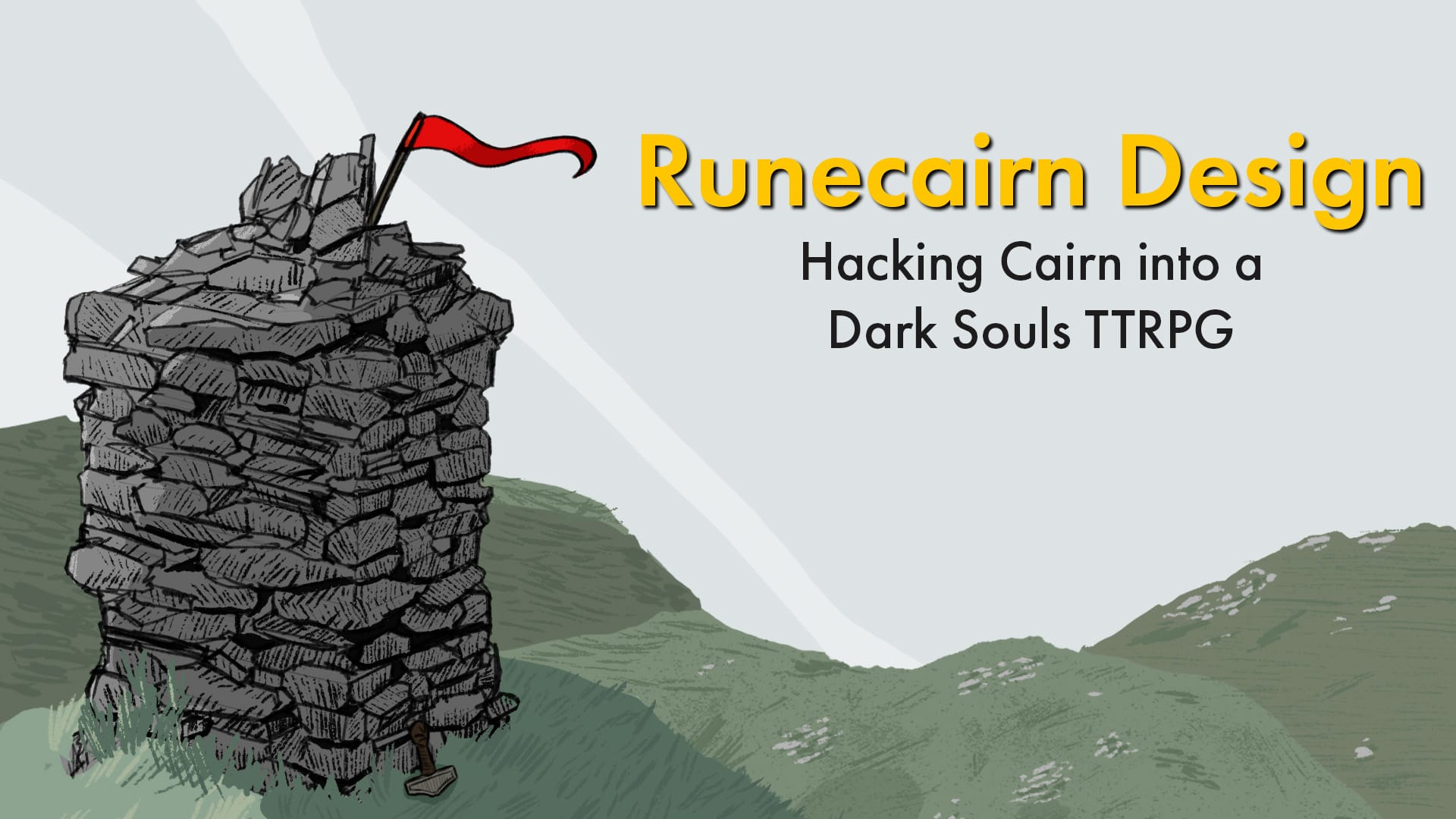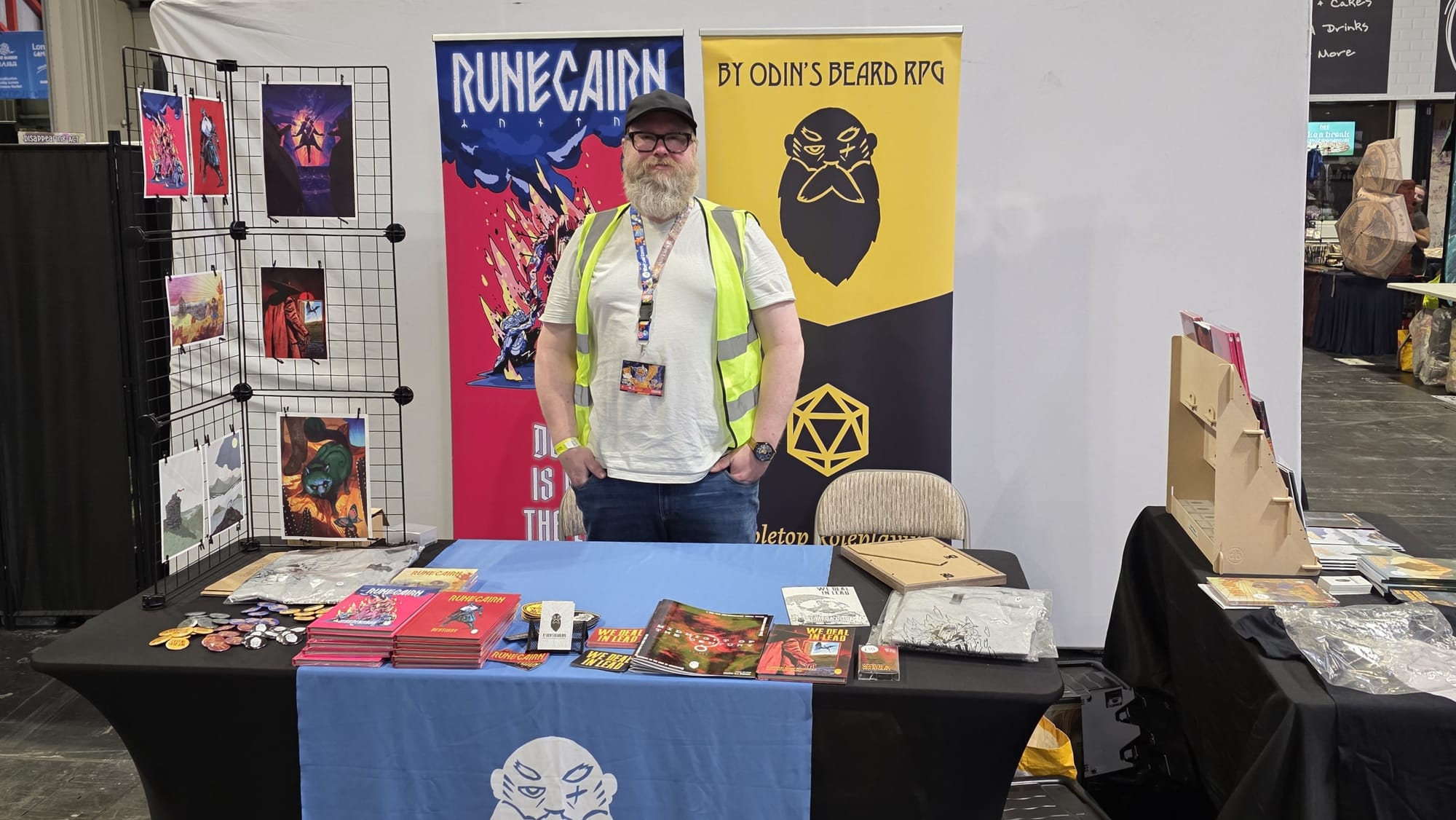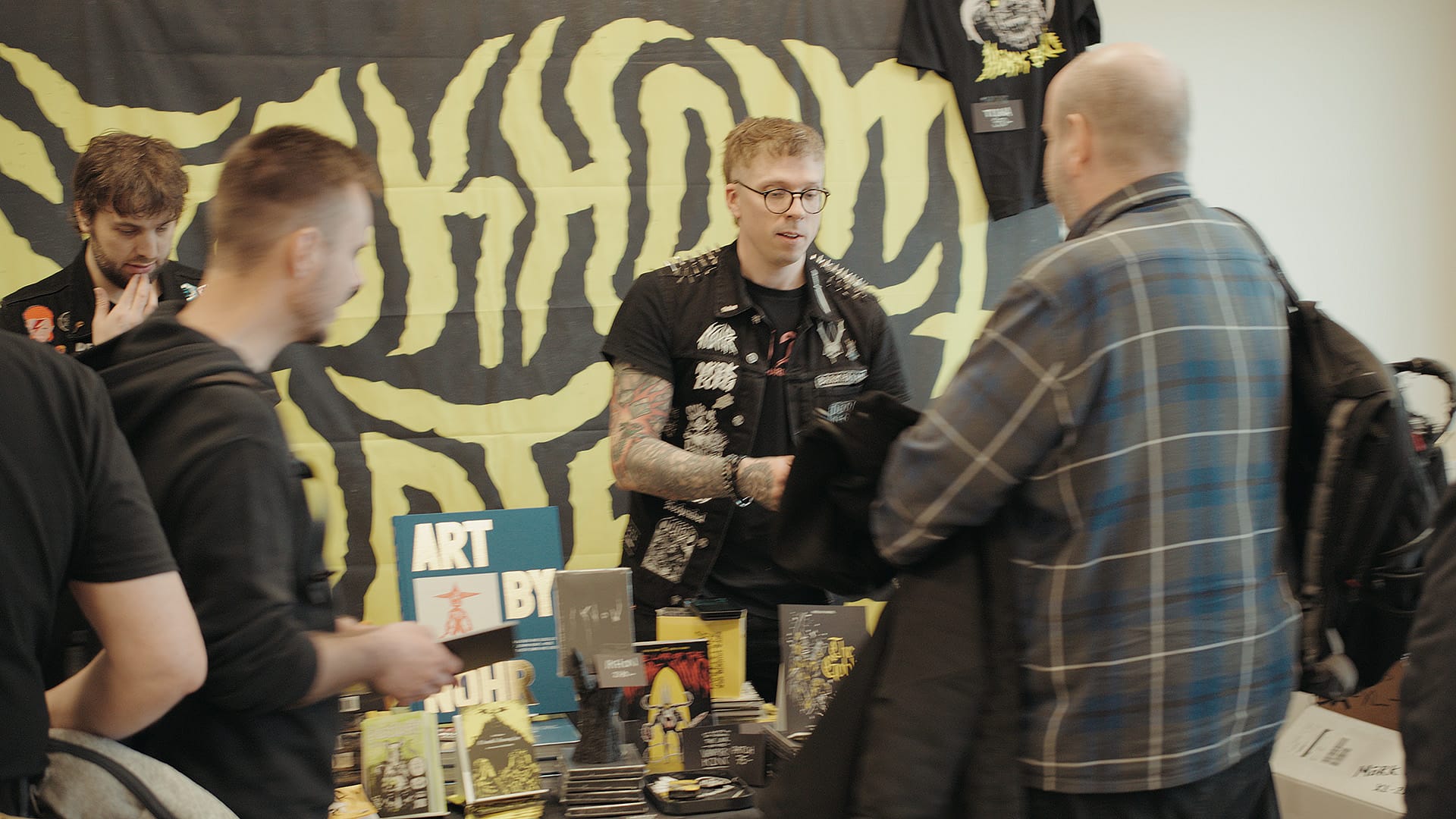
With Wardensaga coming out later this month, I want to look back on some of my design decisions for Runecairn. Partly as critical self-reflection but also to walk you through some of my reasonings and choices. I started with a goal of making a Dark Souls tabletop roleplaying game.
I'm a massive fan of the Souls series and thought it would be a cool experiment to see what the experience would be playing it as a TTRPG. I'd previously written and published 5e adventures, but I had a feeling D&D wouldn't be the right fit for Dark Souls. I looked at other systems and considered using Old School Essentials as a base, but I wanted something more streamlined that that. I'd previously come across Cairn by Yochai Gal and really liked the look of it — the cover is what grabbed me the most but also the general vibe.
I wanted my Soulslike TTRPG to have fast and dynamic combat. I played around with different models but having to role to hit and for damage slowed things down too much. Cairn gets rid of to-hit roles and instead has a damage mitigation system which fit with what I wanted.
The key points from Dark Souls that I wanted to include were: bonfires, respawning enemies, and dynamic combat. Bonfires mean that your PC doesn't permanently die when killed: they awaken at the last bonfire they rested at. Resting at a bonfire heals you and respawns most enemies. This doesn't include bosses, mini-bosses, or NPCs but just the general enemies you'd find in a dungeon or encounter.
By dynamic combat I mean reactive, skill-based, and engaging. The PC should be able to choose how they react to an enemy's attack and act accordingly. In practice, this means reactions: dodges, parries, magic shields. Your items determine what you can do, rather than your class. Your item is your class, essentially. Want to become a mage? Pick up a staff and spellbook. Fighter? Pick up a shield.
Even though your item determines your class, I wanted some structure around new characters. I took inspiration from classic TTRPGs and created 4 starting classes: warrior, thief, mage, and priest. Cairn has 3 ability scores: strength, dexterity, and will. I wanted my classes to each have a different primary ability so I added intelligence (later changed to wits) and changed will to wisdom (later changed to spirit): warrior (Str), thief (Dex), mage (Wit), priest (Spi).
Rather than have PCs be 100% immortal and to add some stakes to character death, I took the humanity concept from Dark Souls and applied that to character hit points. Every time you die, your HP is reduced by 1, replicating the death spiral that appears in some Souls games. Cairn uses Hit Protection (HP), which governs how good your character is at avoiding injury. Once HP is reduced below 0, you start taking Str damage from attacks. I'd initially had spirit tied into HP but this gave priests more of an advantage so I changed it to Vigour. Vigour is essentially the humanity stat. You lose Vigour at death and lose your character if your Vigour is reduced to 0. This represents the process of Hollowing in Dark Souls, where every death brings you one step closer to losing yourself and becoming a mindless hollow.
I added weapon and item abilities in another major change to Cairn. These add fatigue to your inventory, so juggling items and abilities becomes a process of risk/reward, one of the core philosophies of my new system. With the main mechanics in place, I applied a Norse fantasy overlay. I changed some of the starting classes (thief became scout, mage became seer, and priest became skald). I've tried to keep the theme and setting as realistic as possible, albeit through a lens of Norse fantasy. Most items, equipment, armour are roughly historically accurate, with some leeway for fun and practicality. The setting is Viking Age (8th-11th century roughly), but in a mythical world some time after Ragnarok has destroyed most of the 9 realms and killed most of the gods.
I decided to keep the magic and mechanics of the world deliberately vague. Why are the PCs trapped in a cycle of death and rebirth? What magic is behind the bonfires? These are questions that drive potential campaigns and will have different answers at each table.
Finally, character advancement was the last big change I made when hacking Cairn (which has no levels and a scars system that provides randomised changes to ability scores). Runecairn has Souls, which serve as treasure, currency, and XP. Cash in your souls at a bonfire to level up core abilities or Vitality (the other half of HP). Barter them with NPCs for items or favours. Lose them on death, with only one chance to recover.
So, what started out as a thought experiment to see if I could make a workable Dark Souls TTRPG has developed into a cool little system and Norse fantasy setting, released under CC BY-SA and with a 3rd party license.





